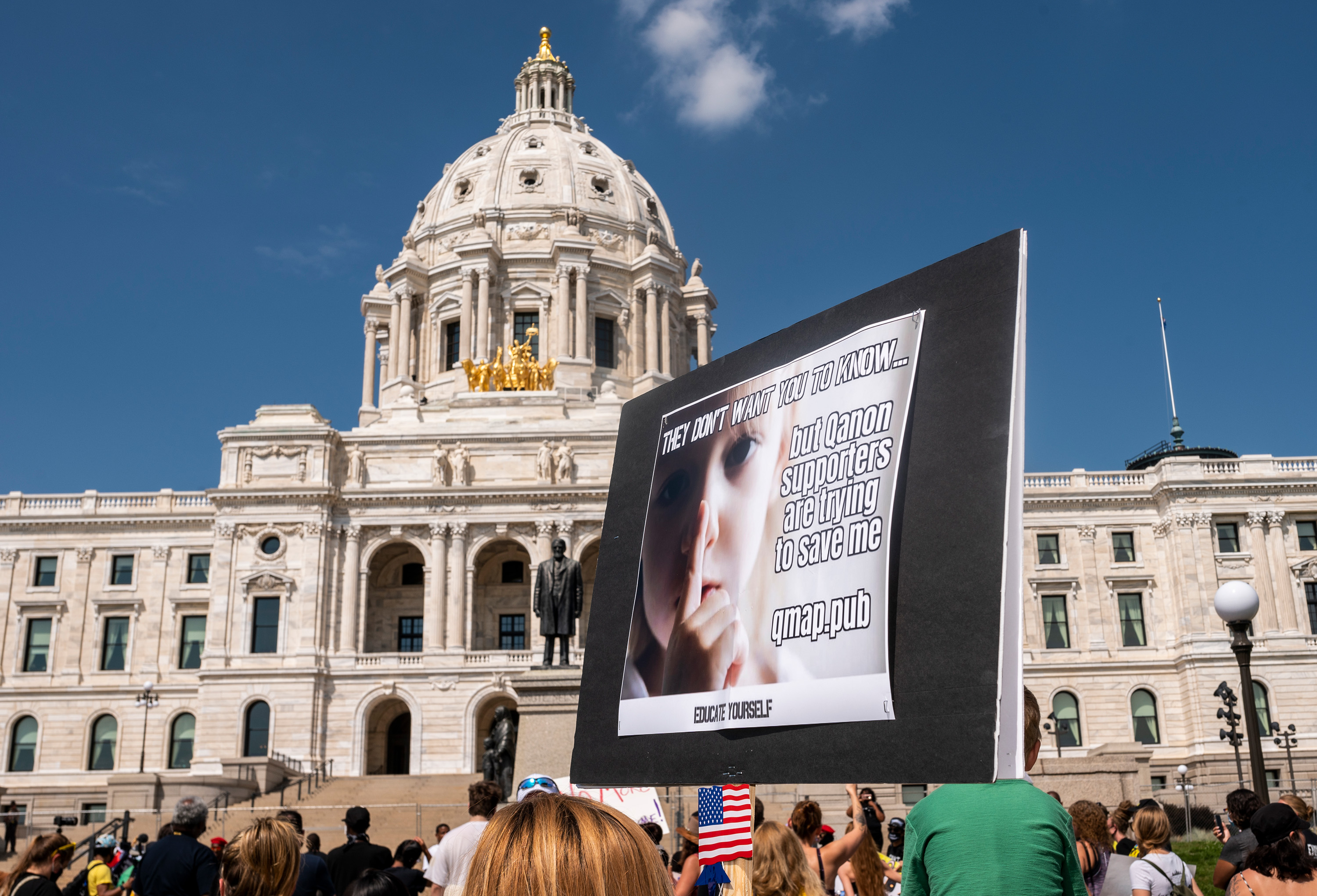Congress was warned over QAnon. Hours later, Trump boosted it.

The news: In a 90-minute virtual US congressional hearing hosted by the House Intelligence Committee on Thursday, representatives took stock of the state of misinformation in America and sought advice from some of the leading experts in the field. What they heard were urgent, alarming warnings about the state of truth, political fragmentation, and the spread of conspiracy theories, specifically QAnon.
“In many respects it looks like we have taken one step forward and two steps back.”
—Congressman Adam Schiff
Later that day during a televised town hall meeting, President Trump said he knew “nothing” about QAnon, before saying that he agreed with one of its central beliefs.
Who was there: The committee, headed by Democrat Adam Schiff, heard from four disinformation experts: Joan Donovan (a regular contributor to MIT Technology Review), Nina Jankowicz, Cindy Otis, and Melanie Smith. They discussed the proliferation of malign actors and misinformation around the election campaign, noting that they were the result of largely domestic forces. Otis remarked that they “embrace and deploy tactics that sound much more like foreign influence operations than the tactics of good digital campaigning.”
Who wasn’t: No Republicans attended the hearing. In fact, Republican members of the House Intelligence Committee have been boycotting almost all meetings for months. Jankowicz urged the depoliticization of online disinformation, saying that “disinformation is a threat to democracy no matter what political party it benefits.” Several witnesses and Chairman Schiff pointed out that President Trump regularly creates, shares, and amplifies disinformation.
What happened next: At a town hall event on NBC later that evening—replacing the second presidential debate, which was cancelled amid concerns over the president’s recent covid-19 diagnosis—Trump was asked to reject QAnon’s fake theory that senior Democrats are part of a satanic operation to abuse and traffic children. At first he claimed, “I know nothing about QAnon,” before adding, “I do know they are very much against pedophilia” and arguing that what he was being told by moderator Savannah Guthrie “doesn’t necessarily make it fact.”
More from the experts: The congressional witnesses had testified that online disinformation is now more widespread than ever and getting more sophisticated, more nuanced, and harder to monitor. They emphasized newer trends like coordinated messages across groups and platforms, information laundering through trusted local sources, and “hidden virality,” in which the amplification of disinformation occurs in closed, unauditable spaces that make it harder to spot and remove.
What next: A host of solutions were mentioned, though largely in passing, including rewriting Section 230, the law that protects internet platforms from responsibility for the content produced by users, as well as eliminating tax breaks for social-media companies and creating accountability mechanisms for their sites. Witnesses urged redesigns of recommendation algorithms and more user-friendly reporting features for people running into online disinformation.
Lessons unlearned: In his closing statement, Schiff said, “In many respects it looks like we have taken one step forward and two steps back when we look at where we are now compared to where we were four years ago.” In fact, it was less than a day before Trump was courting the conspiracy crowd once again.
Deep Dive
Humans and technology
Building a more reliable supply chain
Rapidly advancing technologies are building the modern supply chain, making transparent, collaborative, and data-driven systems a reality.
Building a data-driven health-care ecosystem
Harnessing data to improve the equity, affordability, and quality of the health care system.
Let’s not make the same mistakes with AI that we made with social media
Social media’s unregulated evolution over the past decade holds a lot of lessons that apply directly to AI companies and technologies.
Stay connected
Get the latest updates from
MIT Technology Review
Discover special offers, top stories, upcoming events, and more.